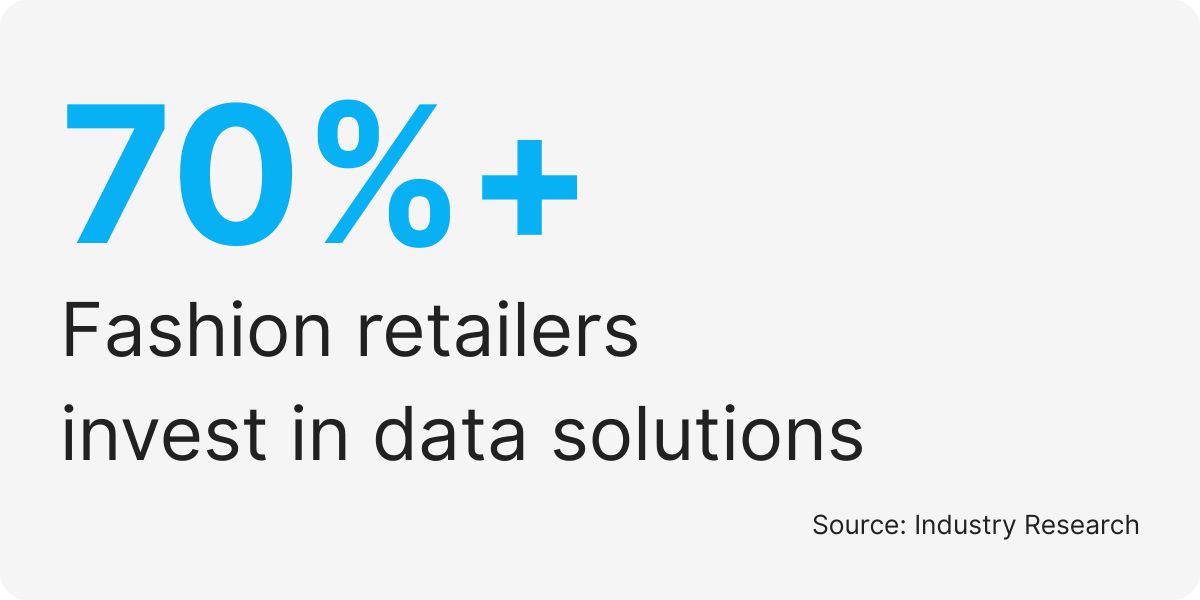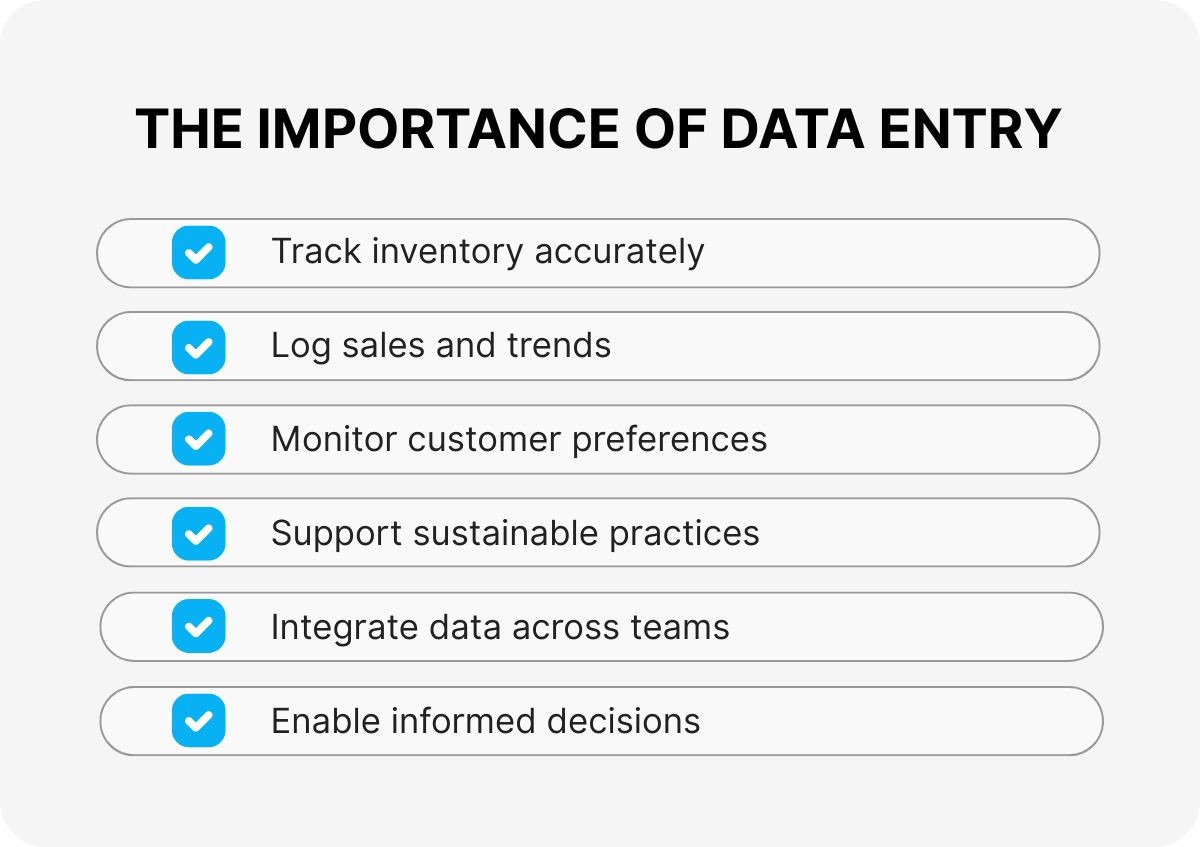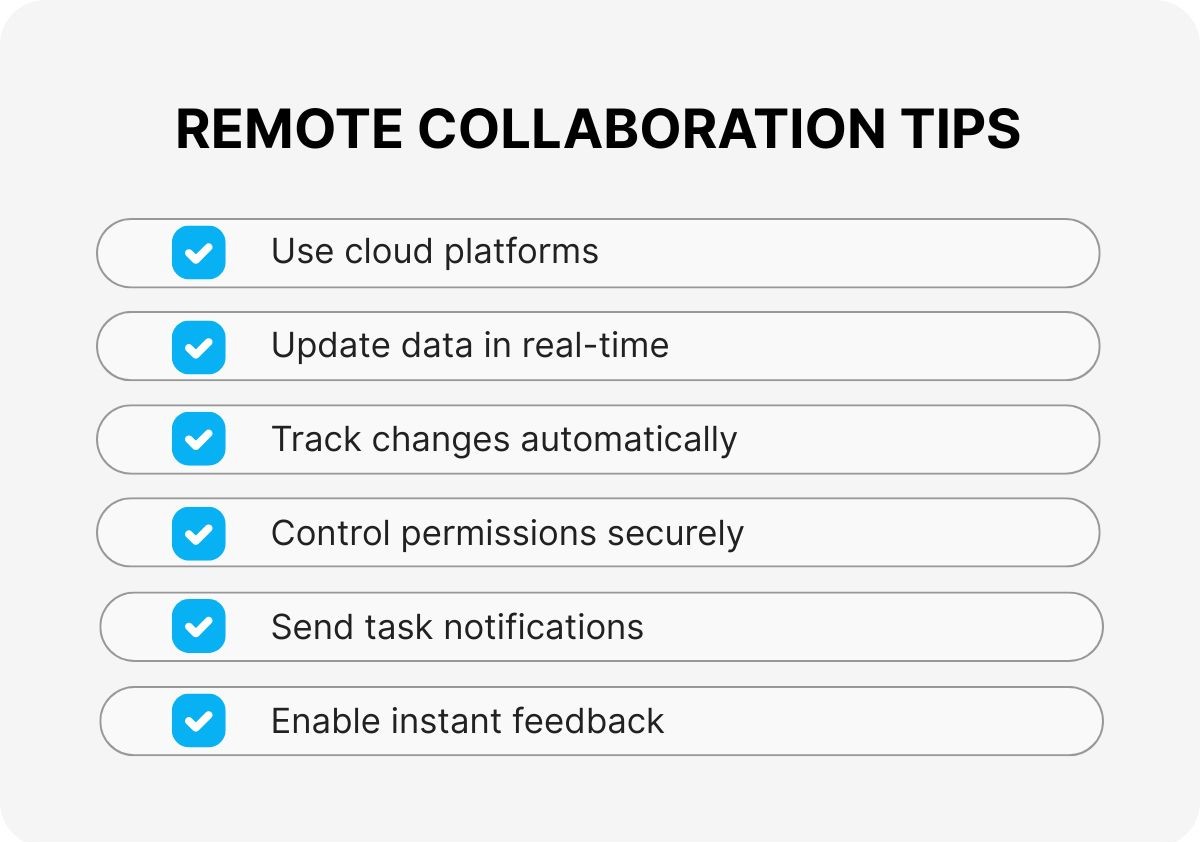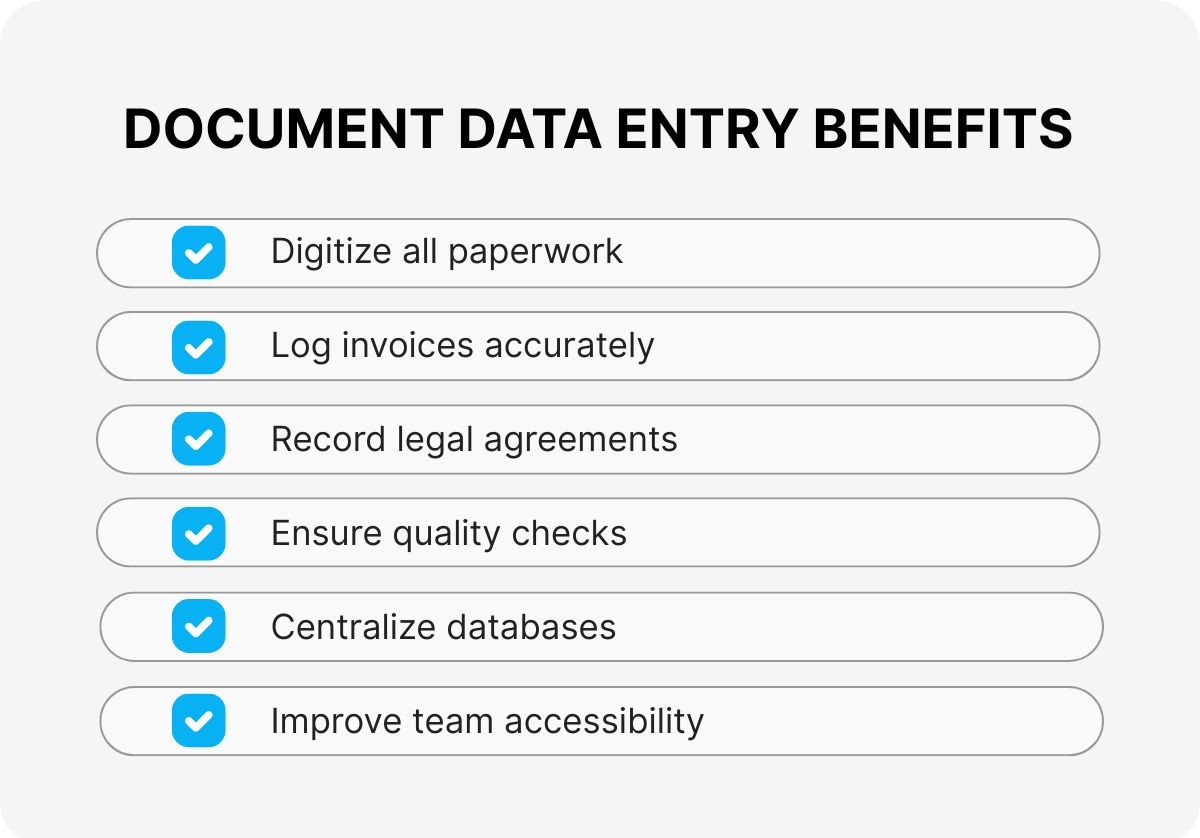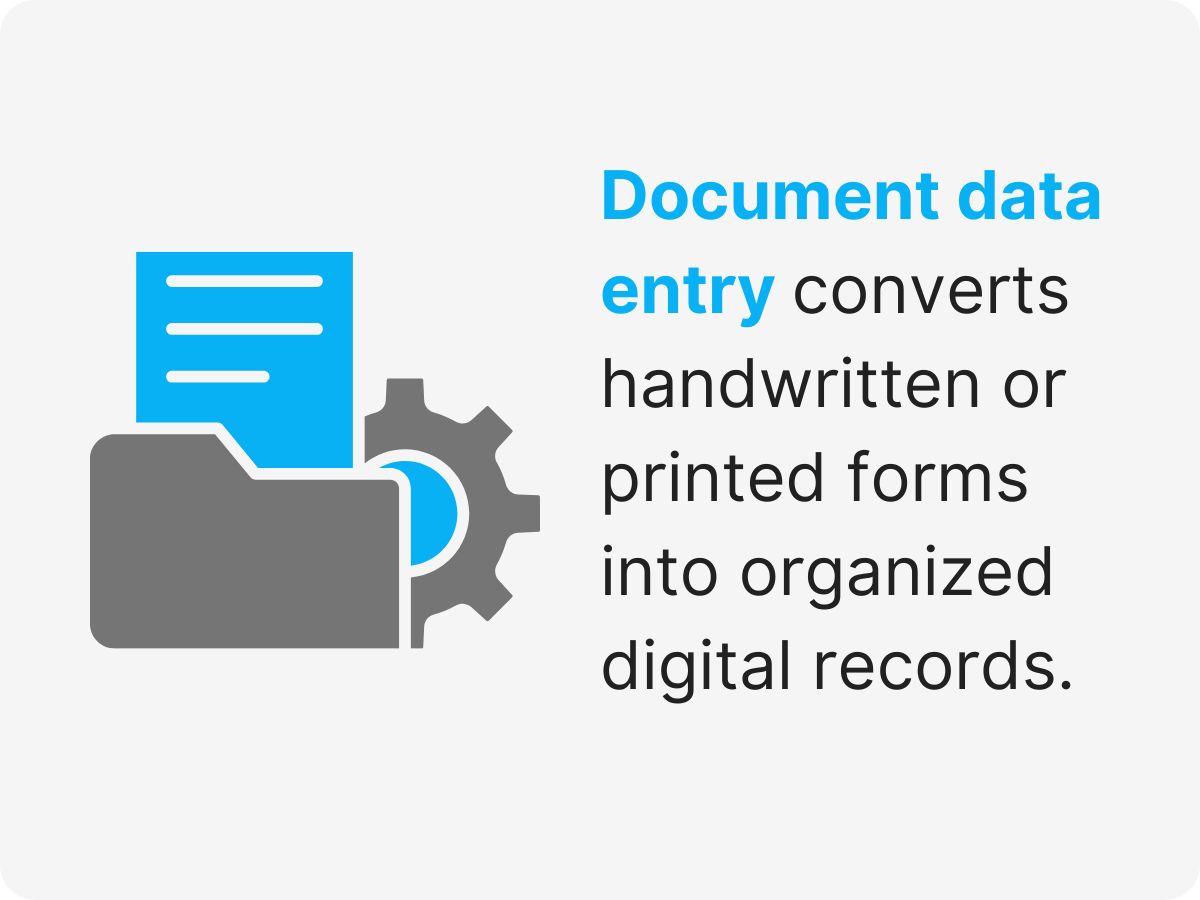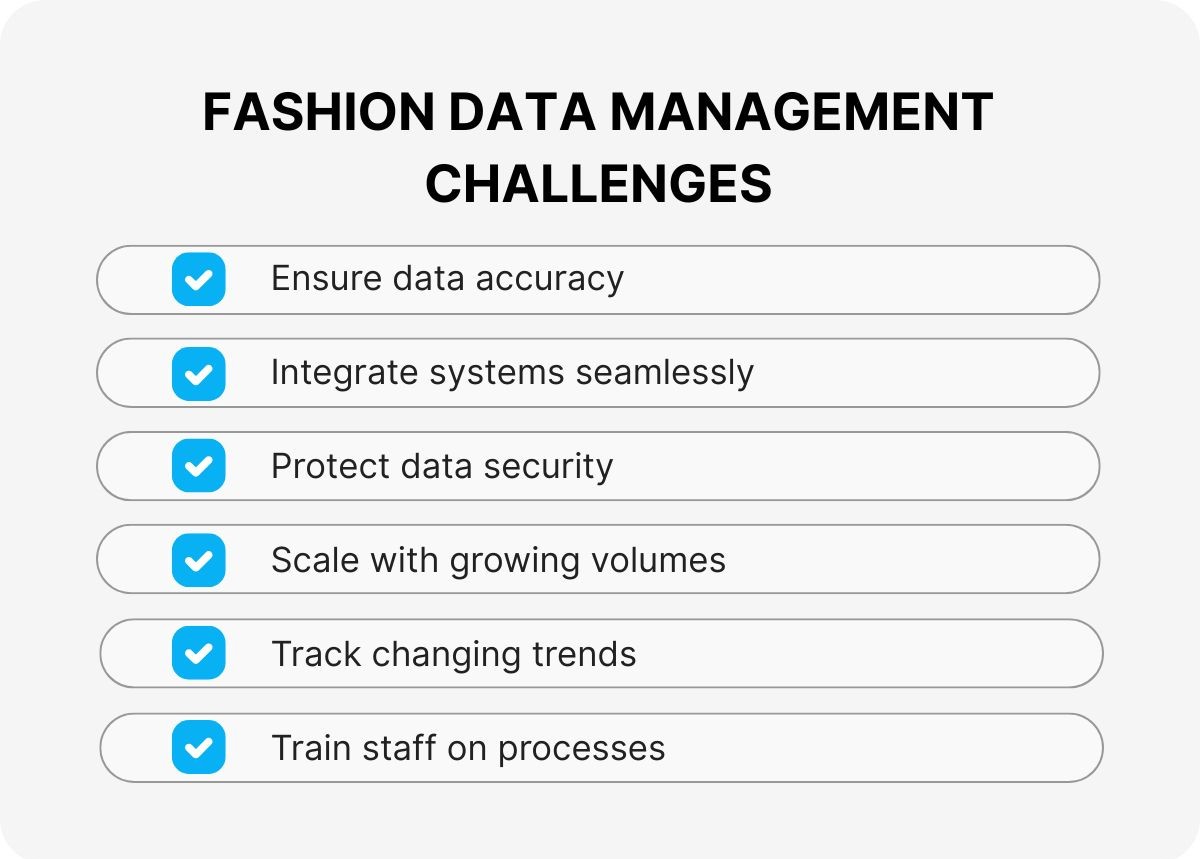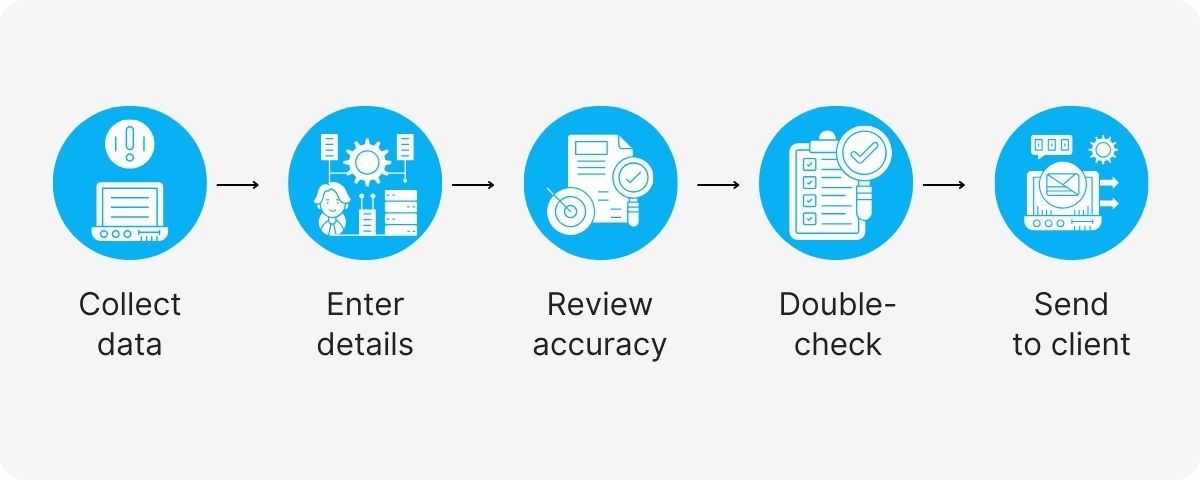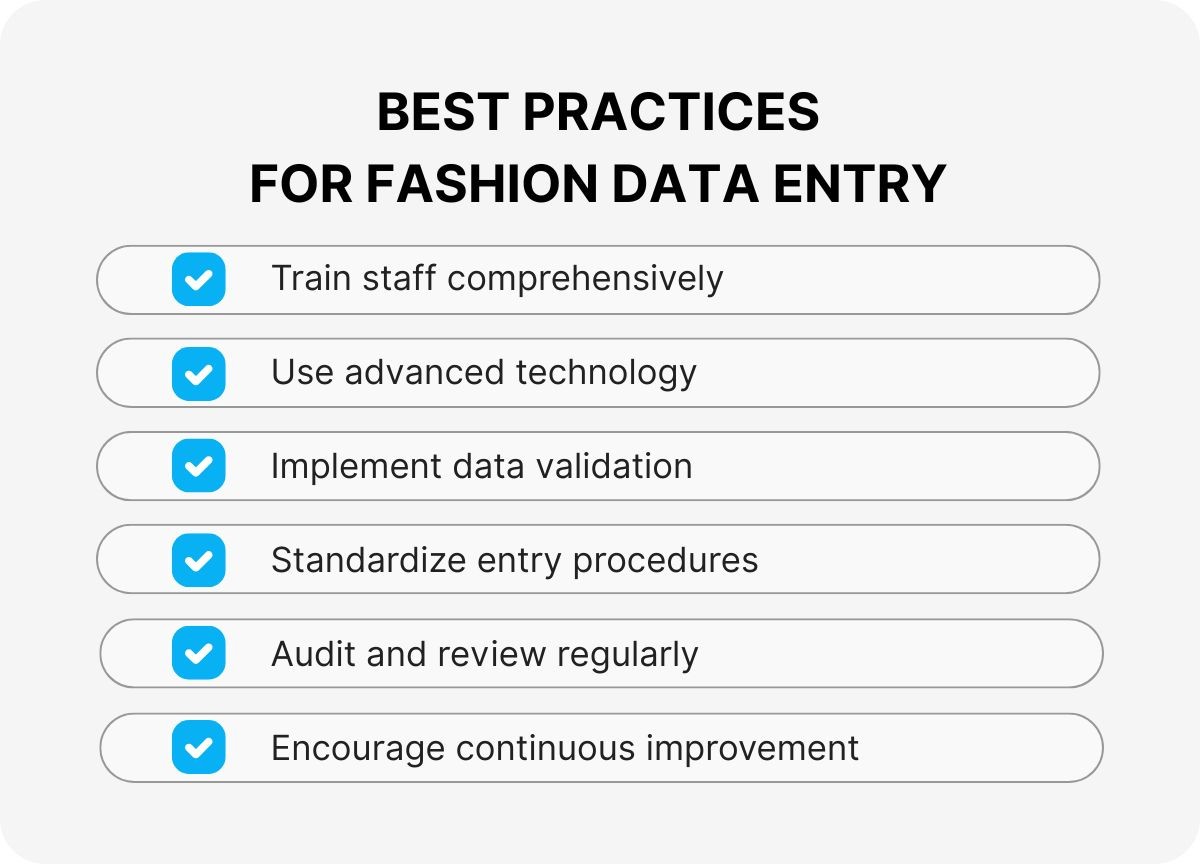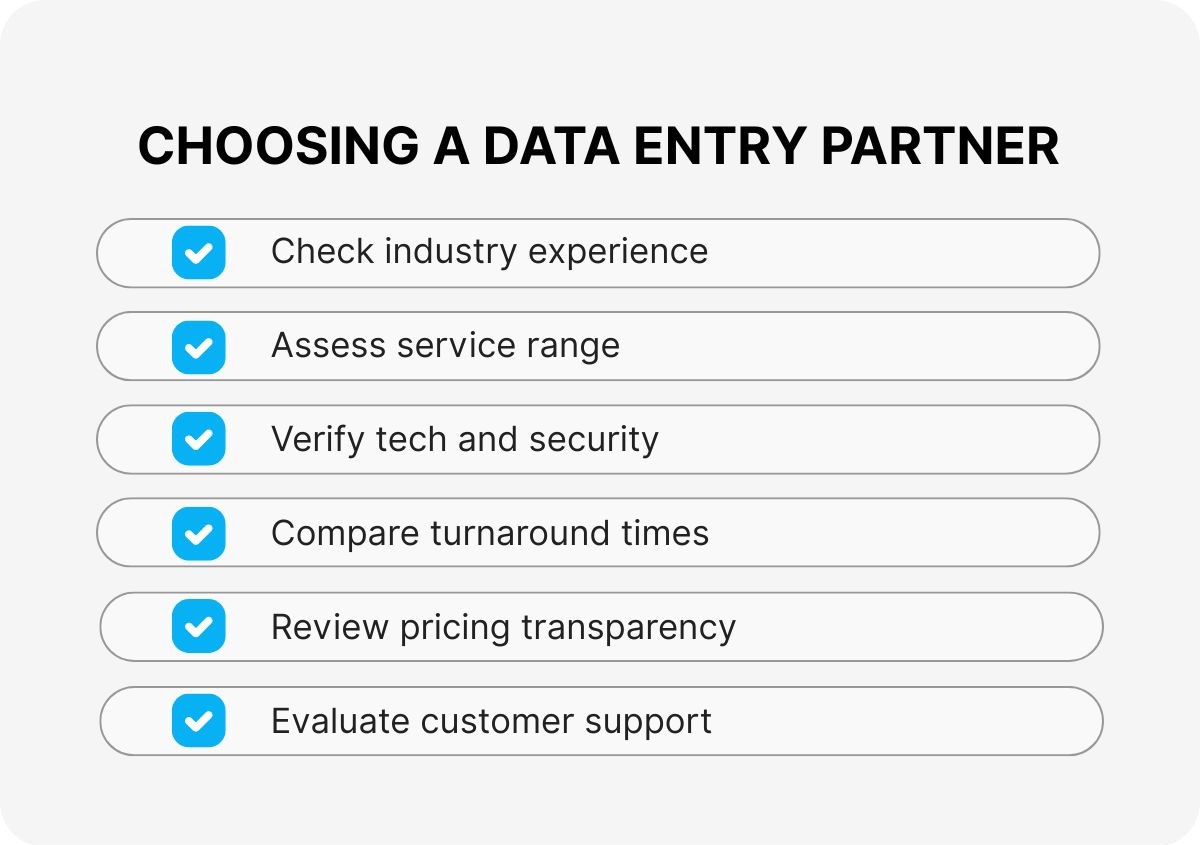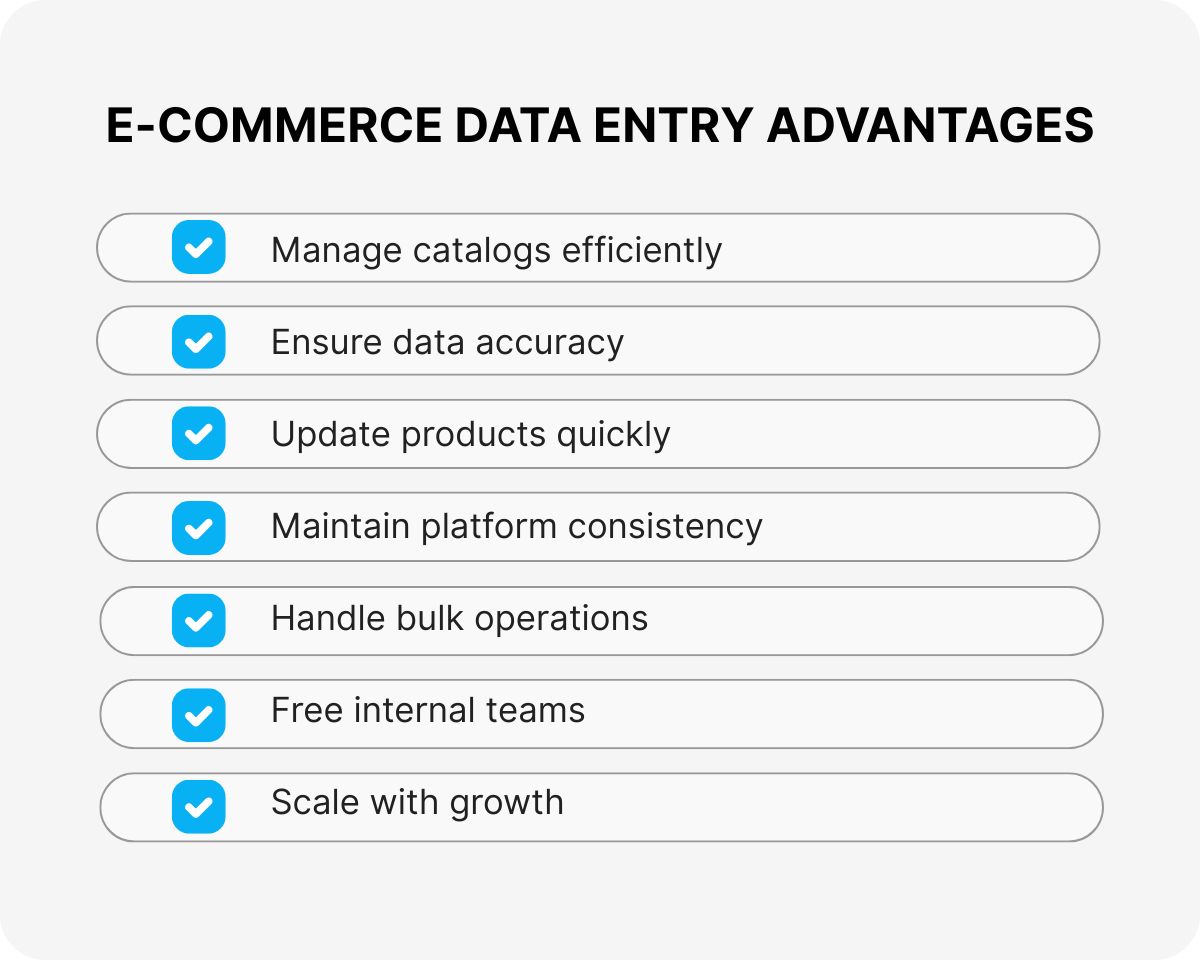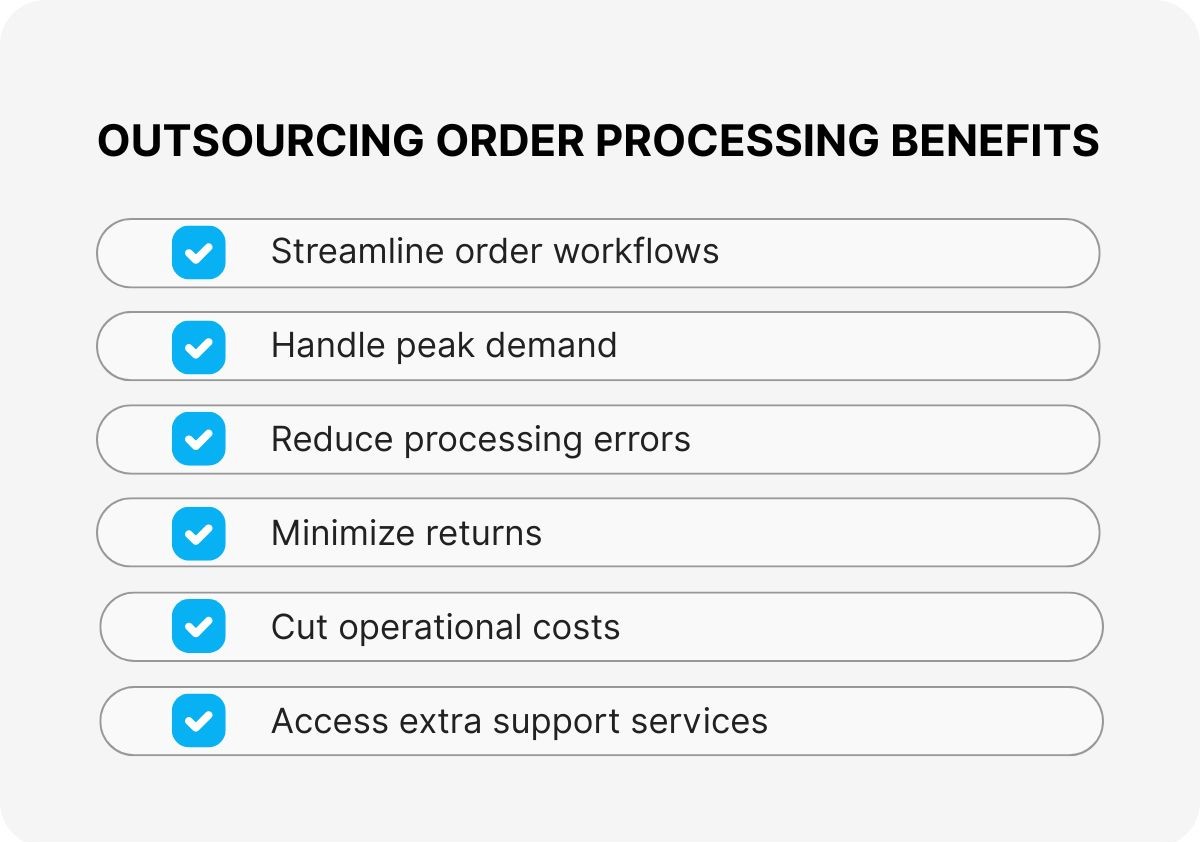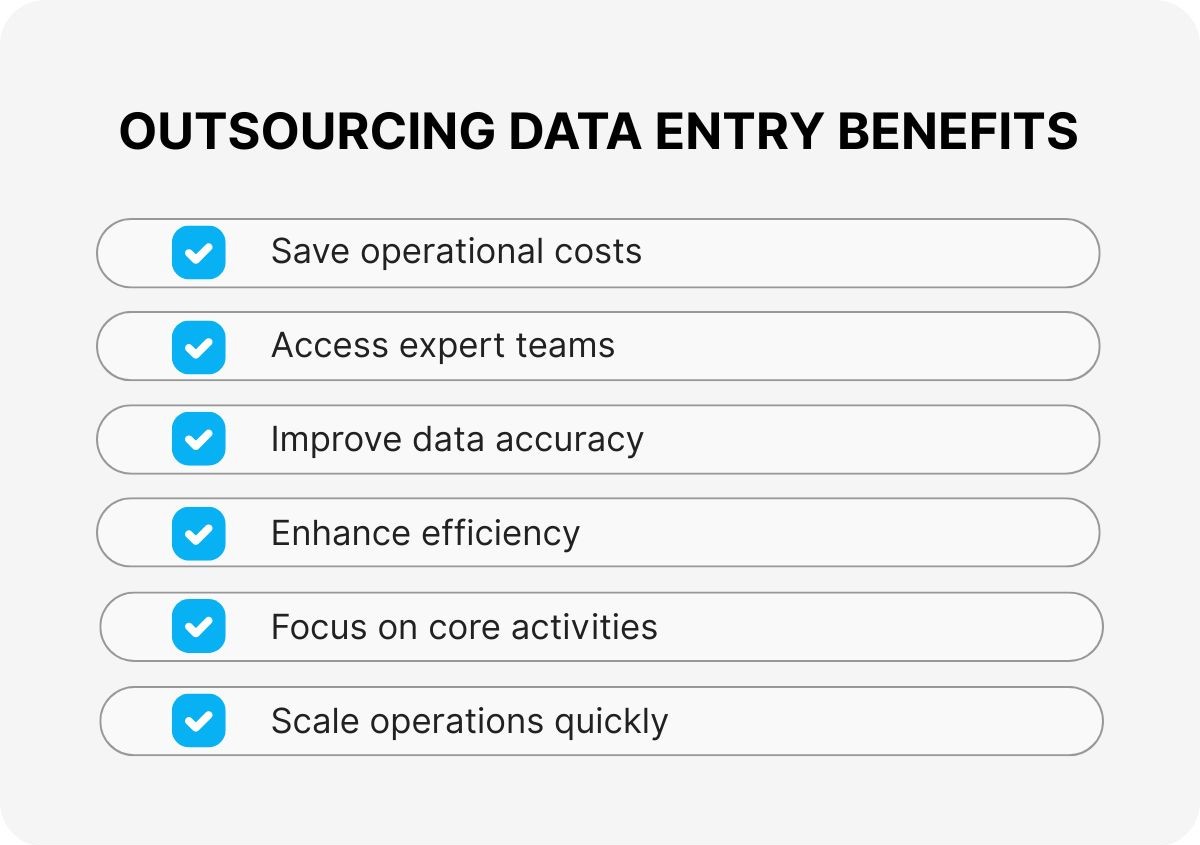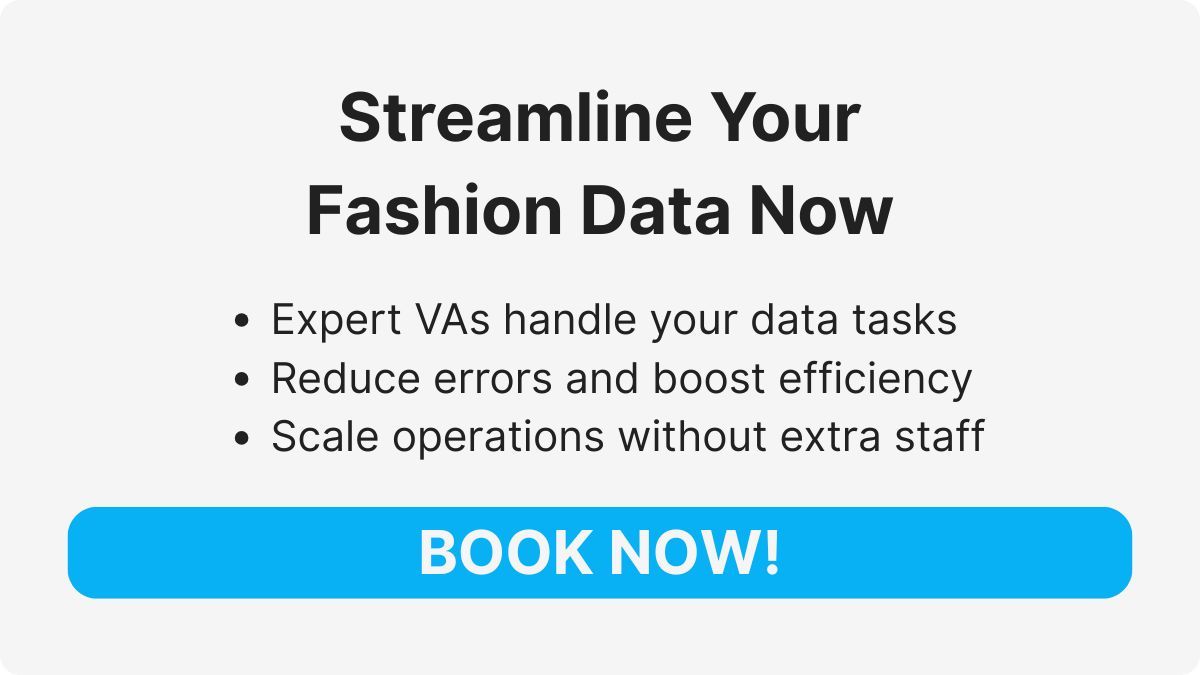Data entry for the fashion industry is essential to maintain accurate inventory, pricing, and product information. Stealth Agents provides reliable remote data entry support so fashion brands can stay organized, avoid costly errors, and focus on growth, effortlessly scaling operations with expert virtual assistance.
The fashion industry relies heavily on precise data management, which is why data entry in the fashion industry must stay ahead. Accurate data entry is a back-end operation and a strategic asset that can transform retail operations and customer engagement. Research shows that over 70% of fashion retailers invest in data solutions to streamline operations and enhance customer experiences. This highlights the critical role of efficient data entry in driving success.
Whether managing inventory or analyzing consumer trends, hiring virtual assistants with the right expertise is paramount. By partnering with Stealth Agents, businesses can find, hire, or outsource data entry tailored to the fashion industry’s unique demands. Book a free discussion today to explore virtual assistant pricing and elevate your data management strategy.
What is The Importance of Data Entry in the Fashion Industry?
Data entry is pivotal in ensuring that businesses remain competitive and efficient in the rapidly evolving fashion industry. Accurate data entry allows companies to manage inventory effectively, reducing waste and optimizing stock levels, which is crucial for profitability and sustainability.
The data entry fashion industry is not just about numbers; it’s about harnessing insights to predict trends and understand consumer behavior. By meticulously logging sales data and customer preferences, an executive assistant fashion specialist helps brands tailor their offerings to meet market demands and explore sustainable fashion ideas that resonate with eco-conscious consumers.
Furthermore, data entry enables seamless integration across various platforms, ensuring that every department operates harmoniously, from design to distribution. In a world where information is power, the data entry and fashion industries stand at the forefront, driving informed decision-making and fostering innovation. As brands strive to balance creativity with responsibility, efficient data entry becomes indispensable in crafting a sustainable and prosperous future.
How Remote and Digital Platforms Transform Collaboration
Advances in remote and digital data entry solutions have revolutionized collaboration in the fashion industry. With platforms like Google Workspace and Microsoft 365, teams across the globe, whether in New York, Milan, or Manila, can access and update vital data in real time, ensuring everyone stays aligned.
Cloud-based systems enable instant task updates, automatic change tracking, and effortless version control. This transparency streamlines workflows, helps managers spot issues quickly, and ensures quality standards are met.
Key features include:
- 24/7 access to shared spreadsheets and databases
- Automated task notifications
- Permission controls for data security
- Integrated chat and comment tools for instant feedback
How Document Data Entry Services Boost Digitization and Organization
Document data entry services are the unsung heroes of the fashion industry, turning chaotic paperwork into organized, searchable digital records. By digitizing everything from handwritten notes to legal agreements, these services streamline data management and improve efficiency.
What It Looks Like in Practice:
- Digitized Documents: Invoices, purchase orders, surveys, legal files, and historical designs are securely logged.
- Accuracy: Advanced tools and quality checks ensure every detail is captured, reducing costly errors.
- Accessibility: Centralized databases make information instantly available for inventory, logistics, and customer service teams, no more digging through files.
What Types of Documents and Data Sources Can Data Entry Services Handle?
Data entry services in the fashion industry handle a wide range of documents and data sources, ensuring seamless operations and accurate information management.
Typical Documents Processed:
- Invoices & Purchase Orders: Essential for financial tracking and supply chain management.
- Customer & Supplier Forms: Keep contact and preference details up to date.
- Surveys & Feedback Forms: Provide insights for trend forecasting and customer engagement.
- Product Catalogs & Inventory Lists: Prevent stock errors and streamline inventory management.
- Sales Reports, Shipping Documents, & Returns: Support smooth order fulfillment.
Additional Data Sources:
- Handwritten notes from market research.
- Digital images of receipts, tags, or barcodes.
- Online forms from platforms like Shopify or Amazon.
- Audio transcriptions from meetings or focus groups.
- Video annotations for marketing campaigns.
What is Document Data Entry, and What Types of Documents Can Be Processed?
Document data entry is the precise process of converting various documents, handwritten notes, printed forms, or digital files, into organized, searchable digital records. This involves extracting key details, validating accuracy, and entering data into centralized systems.
Documents Handled:
- Invoices and receipts
- Purchase orders
- Customer forms and registration cards
- Survey responses
- Legal contracts and compliance documents
- Medical records and healthcare forms
What Are the Main Types of Data Entry Services Available?
Data entry services in the fashion and retail industry come in various forms, each tailored to specific needs. Here’s a breakdown of the primary types:
1. Online Data Entry Services
The backbone of real-time operations, online data entry ensures accurate and up-to-date information across platforms like Shopify, Magento, and WooCommerce. Tasks Include:
- Updating product catalogs and online stores
- Processing receipts and digital bills
- Capturing survey, order, or customer feedback
2. Offline Data Entry Services
Essential for digitizing physical paperwork, offline data entry creates reliable archives for easy retrieval. Tasks Include:
- Transferring details from printed forms (e.g., order slips, registration cards)
- Digitizing payroll records
- Processing paper-based surveys
3. Document Data Entry Services
Focused on converting paper documents into searchable digital files, often using OCR technology. Tasks Include:
- Digitizing legal documents, warranty reports, and research files
- Organizing registration and inquiry forms
What Specific Tasks and Processes Are Included in Online Data Entry Services?
Online data entry is essential for keeping fashion operations agile and efficient. Here’s how it plays out in daily tasks:
Key Activities:
- Digitizing Product Catalogs: Updating style numbers, sizes, colors, descriptions, and pricing for accurate e-commerce and POS listings.
- Invoice & Receipt Management: Logging sales transactions, vendor invoices, and customer receipts to track expenses and revenue in real time.
- Image Data Handling: Uploading, tagging, and annotating product images for lookbooks, websites, or marketplaces like ASOS and Zalando.
- Customer & Feedback Data Entry: Recording customer details, purchase histories, and feedback to enable personalized marketing and service.
- Subscription & Membership Processing: Managing loyalty programs, stylist subscriptions, and exclusive early-access records.
- PDF & Document Indexing: Organizing contracts, design blueprints, and manuals for easy access and compliance.
What are the Challenges in Fashion Data Management?
1. Data Accuracy and Consistency
In the data entry fashion industry, maintaining accuracy is a constant challenge. Inaccurate data can lead to poor decision-making, affecting everything from inventory management to marketing strategies. Ensuring consistency across multiple platforms becomes even more complex as brands expand globally.
Errors in data entry can cause discrepancies that ripple through the supply chain, leading to stockouts or overstocking. This affects profitability and customer satisfaction. To mitigate these risks, fashion companies must invest in robust data validation processes. Fostering a culture of precision among employees is crucial to maintaining the integrity of data systems.
2. System Integration Across Platforms
The data entry fashion industry often needs help with integrating diverse data systems. Each department, from design to sales, may use different software, leading to siloed information. This lack of integration hampers a brand’s ability to view the business holistically. It becomes difficult to synchronize data, which is vital for strategic planning and operational efficiency.
Seamless integration is essential for sharing real-time data and avoiding duplicate efforts. As brands embrace digital transformation, they must prioritize scalable solutions that unify their data architecture. This requires a strategic investment in technology and training.
3. Data Security and Privacy
Protecting sensitive information is paramount in the data entry fashion industry. With increasing cyber threats, safeguarding customer data and proprietary designs is a growing concern. Fashion brands often collect vast amounts of data, making them attractive targets for hackers. A breach can damage an ethical brand’s reputation and lead to significant financial losses.
Implementing stringent security protocols and regular audits is essential to protect data integrity. Companies must also comply with global data protection regulations, which adds complexity. Educating employees about cybersecurity best practices forms a crucial line of defense.
4. Scalability and Managing Large Volumes of Data
As fashion brands grow, so does the volume of data they must manage. The challenge in the data entry fashion industry is scaling data management systems to handle increased loads without compromising performance. More efficient systems can lead to faster data processing and ensure timely decision-making.
Brands must adopt scalable infrastructure that can expand as their business needs change. This involves using cloud-based solutions and investing in advanced analytics tools. By doing so, companies can remain agile and responsive in a fast-paced market.
5. Adapting to Rapidly Changing Trends
The fashion industry is known for its rapid shifts and trends, posing a unique challenge for data management. The data entry industry in fashion must be agile enough to adapt quickly to these changes. Understanding consumer preferences and market shifts requires real-time data analytics.
Brands must be able to pivot their strategies based on insights gathered from current trends. This adaptability can give companies a competitive edge and help them remain relevant. Staying ahead of trends also supports the development of sustainable fashion practices, aligning with the values of an ethical brand. This requires a proactive approach to data collection and analysis.
The Typical Workflow of Professional Data Entry Services
The workflow of professional data entry services is a meticulous, multi-step process designed to ensure accuracy and reliability. Here’s how it unfolds:
1. Client Intake and Data Centralization
The process begins with onboarding, where all necessary information, whether from receipts, apps, or spreadsheets, is collected and stored in a secure, centralized hub. This step prevents the chaos of missing files later on.
2. Data Input with an Eye for Detail
Skilled specialists input the data, carefully handling every detail, from SKU variations to seasonal color codes. Strict guidelines ensure consistency and precision throughout.
3. Rigorous Quality Control
A dedicated quality team reviews the records, identifying and correcting any inconsistencies or errors. This step ensures the data is clean and disruption-free.
4. Independent Verification
A fresh set of eyes performs a randomized double-check of entries, adding an extra layer of confidence, like a second fitting to ensure perfection.
5. Final Delivery and Client Notification
After thorough vetting, the polished data is delivered to the client, complete, accurate, and ready to support seamless operations.
What are the Best Practices for Effective Data Entry in the Fashion Industry?
1. Comprehensive Training Programs
In the data entry fashion industry, having a well-trained staff is crucial to maintaining data integrity. Employees must understand the importance of accurate data entry and the impact of errors on business operations.
Regular training sessions help reinforce best practices and keep staff up to date on new technologies. By investing in comprehensive training, fashion brands can reduce the risk of errors and enhance overall productivity.
Cross-training employees in different data entry tasks also ensures flexibility and resilience in operations. This approach promotes a deeper understanding of the fashion data landscape, empowering employees to make informed decisions. Practical training is a cornerstone of reliable data management.
2. Leveraging Advanced Technology
Utilizing cutting-edge technology is essential in the data entry fashion industry. Automation tools can significantly improve accuracy and efficiency, reducing the manual workload. Implementing software solutions that integrate seamlessly with existing systems helps streamline data processes.
Fashion brands should explore AI and machine learning technologies to enhance data analytics. These tools can provide insights into consumer trends and inventory management, helping to drive strategic decisions. Moreover, technology can help bridge the gap between data entry for real estate and fashion by sharing best practices across industries. Staying ahead of technological advances is a competitive advantage in data management.
3. Robust Data Validation Processes
Ensuring data accuracy is a continuous challenge in the data entry fashion industry. Implementing robust data validation processes helps verify the integrity of information before it is entered into the system. This includes double-checking entries, using validation software, and setting up automated checks.
By catching errors early, brands can prevent costly mistakes and maintain reliable datasets. Regular audits and quality checks are necessary to uphold data standards. These practices build trust in the data used for strategic decisions. A culture of vigilance and accountability in data management supports long-term business success.
4. Standardizing Data Entry Procedures
Consistent procedures are vital for effective data entry in the fashion industry. Standardizing processes ensures that every team member follows the same protocols, minimizing discrepancies. Documenting procedures and providing clear guidelines helps maintain uniformity across departments.
When data entry tasks are streamlined, it becomes easier to identify and address inefficiencies. Standardization also aids in training new employees and ensures a smooth transition during staff changes. By fostering a structured approach, brands can enhance the speed and accuracy of their data entry operations. Consistency is crucial for maintaining high-quality data throughout the organization.
5. Commitment to Continuous Improvement
The data entry industry in fashion must commit to ongoing improvement to stay competitive. Regularly reviewing and updating data management practices ensures they align with the evolving needs of the industry. Encouraging feedback from employees can uncover new efficiencies and innovations.
Brands should stay informed about industry trends and integrate best practices from other sectors. For example, benchmarking against data entry for real estate can offer fresh perspectives and solutions. By fostering a culture of continuous learning and adaptation, fashion companies can maintain excellence in data management. This proactive approach is essential for sustaining growth and innovation.
What Should Businesses Consider When Choosing a Data Entry Service Provider?
Choosing the right data entry partner is a critical decision for fashion brands. Here are the key factors to consider to ensure a perfect match for your business needs:
1. Experience and Expertise
- Opt for providers with a proven track record in the fashion industry or similar sectors.
- Their familiarity with industry-specific data challenges, workflows, and compliance requirements ensures smoother operations.
2. Range of Services
- Look for comprehensive solutions, including data cleansing, validation, and analytics.
- Ensure their offerings align with your operational needs, from inventory management to customer feedback processing.
3. Technology and Security
- Verify their use of advanced automation tools and robust security protocols.
- Ask about their technology stack, encryption standards, and compliance with regulations like GDPR or CCPA to protect sensitive data.
4. Turnaround Time and Pricing
- Compare turnaround times to ensure deadlines are met without compromising quality.
- Look for transparent, competitive pricing with no hidden fees.
5. Customer Support and Communication
- Responsive customer service is essential for resolving issues quickly.
- Evaluate their communication channels and availability to ensure smooth collaboration.
Back Office BPO Services in E-commerce Data Entry
Back office BPO services are a game-changer for e-commerce businesses, especially when it comes to managing data entry and catalog organization. Here’s how they make a difference:
✔️Operational Efficiency: Skilled teams handle routine tasks like bulk product uploads, attribute tagging, and updates with precision. This frees in-house staff to focus on strategy, marketing, and enhancing customer experience.
✔️Scalability: BPO providers enable rapid scaling during peak shopping seasons or major product launches. They ensure data quality and site performance remain intact, even under high demand.
✔️Cost Management: Outsourcing reduces overhead costs and minimizes the resources needed for catalog management. This allows businesses to allocate budgets toward growth and innovation.
Specialized Data Entry Services Across Industries
Data entry services are versatile and cater to a wide range of industries, offering tailored solutions to streamline operations and ensure data accuracy. Here’s how they support various sectors:
- Credit Card Reconciliation: Professionals meticulously record and cross-verify transactions to maintain balanced financial records. Essential for retail, banking, and hospitality industries.
- Financial Data Management: Teams handle general ledgers, accounts payable/receivable, and reconciliations. Ensures up-to-date, error-free financial statements.
- Inventory and Invoice Processing: High-volume businesses like Amazon and Walmart benefit from real-time accuracy in stock and billing records.
- E-commerce Product Data Entry: Supports platforms like Shopify, WooCommerce, and Wix by uploading product descriptions, images, and attributes. Enhances customer experience with seamless catalog management.
- Medical Data Entry: Processes patient records, insurance claims, and billing information with precision. Critical for healthcare providers and clinics.
- Logistics Data Handling: Updates shipment records, delivery manifests, and supply chain documentation. Helps logistics giants like FedEx and UPS maintain efficiency.
- Manual Data Entry & Copy-Paste Services: For complex or nuanced datasets, manual entry ensures accuracy when automation isn’t feasible.
What Tasks and Processes are Involved in Offline Data Entry Services?
Offline data entry remains a vital component of the fashion industry, ensuring that critical information from physical documents and non-digital sources is accurately captured and organized. Here’s how it supports behind-the-scenes operations:
Key Offline Data Entry Tasks in Fashion
- E-Book and Catalog Entry: Transferring text, images, and specifications from physical lookbooks or product catalogs into digital formats for internal use or publication.
- Label and Tag Data Entry: Recording SKU details, barcodes, and fabric care instructions to streamline supply chain management.
- Offline Data Collection: Aggregating insights from paper surveys, in-store transactions, or non-digital order forms that might otherwise go untapped.
- Form and Order Processing: Converting paper-based order forms or feedback slips into structured datasets to trigger fulfillment or inform product development.
- Payroll and HR Data Management: Entering employee attendance or payroll details from manual timesheets to ensure accurate compensation and compliance.
Advantages of Data Entry Services for E-Commerce Platforms
E-commerce platforms like Shopify, OpenCart, PrestaShop, 3DCart, Volusion, and Wix each have unique data entry needs. Leveraging specialized data entry services for these platforms provides significant advantages:
- Streamlined Catalog Management: Professional teams handle product listings, updates, and categorization efficiently, ensuring accurate and up-to-date catalogs across platforms.
- Enhanced Accuracy: Experts minimize errors in product descriptions, prices, and inventory details, directly improving customer satisfaction and sales.
- Faster Turnaround: Routine updates, new product launches, and inventory adjustments are completed quickly, allowing businesses to react to market trends without delays.
- Consistency Across Platforms: Standardized procedures ensure uniform product information across platforms, creating a cohesive and professional customer experience.
- Support for Bulk Operations: High-volume tasks like bulk uploads, image tagging, and variant management are handled efficiently, saving internal resources.
- Focus on Core Operations: Outsourcing data-intensive activities frees internal teams to focus on marketing, customer engagement, and business growth.
- Scalability: As businesses grow, data entry teams can scale support to handle seasonal spikes or rapid expansion, ensuring smooth operations.
Current Trends in Data Entry Outsourcing
The data entry outsourcing industry is evolving rapidly to meet the growing demands for smarter, more efficient, and secure solutions. Here are the key trends shaping the landscape:
1. Heightened Focus on Quality and Security
- Businesses are prioritizing accuracy and timeliness in data entry projects.
- Outsourcing partners are implementing stringent quality control measures and multi-layered checks to ensure data integrity and confidentiality.
2. Growing Demand for Cost-Effective Solutions
- Budget-conscious brands are turning to outsourcing as a strategy to manage costs without compromising quality.
- Flexible pricing models and scalable service packages allow businesses to tailor solutions to their specific needs.
3. Rapid Adoption of Advanced Technology
- Automation tools like AI, OCR (e.g., ABBYY), and NLP are transforming workflows.
- These technologies reduce manual input, enhance accuracy, and boost productivity while minimizing long-term costs.
4. Digitalization and Enhanced Remote Collaboration
- The shift to digital and cloud-based platforms supports remote work and collaboration.
- Tools like Google Workspace and Microsoft 365 enable real-time updates, secure file access, and seamless teamwork across distances.
What Comprehensive Data Entry and Related Services Can Be Outsourced?
Fashion brands can unlock significant operational efficiencies by partnering with specialized providers for data entry and document management services. These solutions cover a wide spectrum of data handling needs, supporting both creative and operational aspects of the industry.
Core Data Entry Services
- Manual Data Entry: Digitizing handwritten or printed documents.
- E-Commerce Catalogs: Inputting product details for online stores and inventory systems.
- Transcription: Converting survey responses, customer feedback, and audio recordings into digital formats.
- Indexing: Organizing business cards, legal documents, and patient records for easy access.
Document Management & Conversion
- Digitization: Scanning and using OCR to make paperwork searchable.
- File Conversion: Transforming files (e.g., PDF to Excel or Word).
- Digital Filing Systems: Managing and updating systems for quick retrieval.
Processing Specialized Forms and Transactions
- Invoices & Orders: Processing purchase orders, shipping documents, and billing receipts.
- Subscriptions & Claims: Managing customer subscriptions, insurance claims, and legal forms.
- Order Entry: Handling payment posting and catalog updates.
Data Cleansing & Enrichment
- Validation: Correcting errors and removing duplicates.
- Enrichment: Adding missing information to enhance records for analytics and engagement.
Data Mining, Extraction & Web Research
- Insights Extraction: Using automated tools to analyze large datasets.
- Web Research: Conducting product research, competitor analysis, and list-building.
- Data Mining: Gathering insights from public records, websites, and images.
Support for Workflow Automation
- Streamlining Processes: Automating data imports/exports with quality checks.
- Synchronization: Setting up secure interfaces for seamless data flow across departments.
What Are the Benefits of Outsourcing Order Processing for Home Shopping and E-Commerce Brands?
Outsourcing order processing is a strategic move for home shopping and e-commerce companies, especially those managing high transaction volumes and fluctuating demand. Here’s how it delivers value:
1. Enhanced Operational Efficiency
- Specialized teams streamline order workflows, ensuring faster turnaround times.
- Bottlenecks during peak sales periods, like Black Friday or seasonal launches, are minimized, enabling brands to handle spikes without sacrificing service quality.
2. Higher Accuracy and Fewer Errors
- Trained staff and advanced order entry systems reduce processing errors.
- Fewer mistakes lead to fewer returns, happier customers, and a stronger brand reputation.
3. Cost Savings and Flexibility
- Outsourcing eliminates the overhead costs of hiring, training, and maintaining large in-house teams.
- Resources can be redirected toward growth initiatives, such as expanding product lines or enhancing the customer experience.
- The ability to scale operations up or down based on demand provides flexibility in a dynamic e-commerce landscape.
4. Comprehensive Support Services
- Many outsourcing providers offer additional services like catalog management, inventory updates, and customer notifications.
- This holistic approach ensures a seamless buying experience for shoppers, from cart to doorstep.
Can businesses outsource data entry on a part-time or project basis?
Flexibility is one of the key strengths of working with data entry partners in the fashion industry. Many providers offer scalable options, enabling brands to engage services only when needed, whether for short-term projects or seasonal surges.
This means fashion companies can outsource data entry tasks on a part-time basis or for one-off projects, without being locked into long-term agreements. Such adaptability is ideal for handling tasks like product launches, inventory overhauls, or temporary campaigns.
By leveraging this flexible approach, brands can efficiently manage fluctuating workloads, control costs, and ensure their internal teams remain focused on high-value activities. Ultimately, part-time or project-based outsourcing helps businesses stay nimble and responsive in the face of ever-changing market demands.
Expand on the benefits for small businessesIndustries That Gain from Outsourcing Data Entry
Many industries, ranging from retail giants like Zara to logistics leaders such as DHL, benefit from outsourcing data entry services. The flexibility of these solutions allows for adaptation across multiple sectors, including:
- Fashion and Apparel: From managing inventory databases to tracking seasonal trends, brands can streamline workflows and focus on design.
- Healthcare: Accurate patient records, insurance claims, and medical billing require precision and confidentiality that specialized data entry teams provide.
- E-commerce: Online retailers depend on efficient product cataloging, order management, and customer data organization to boost the shopping experience.
- Finance and Banking: Outsourcing helps institutions manage high volumes of transaction data, compliance documents, and customer files with minimal error.
- Real Estate: Agencies benefit from structured property listings, lease agreements, and client records for smoother operations.
- Logistics and Supply Chain: Organized shipment logs, inventory tracking, and vendor databases are essential for keeping deliveries on schedule.
How Can the Fashion Industry Benefit from Outsourcing Data Entry?
The data entry industry in fashion stands to gain significantly from outsourcing data entry tasks. By leveraging specialized external teams, fashion brands can achieve substantial cost savings, redirecting resources toward innovation and creative development. Outsourcing data entry provides access to a pool of expertise, ensuring that data management is handled with precision and up-to-date techniques.
This improves operational efficiency and enhances data accuracy, which is critical in the data entry fashion industry for predicting trends and optimizing inventory. With these tasks managed externally, companies can focus more on their core activities, such as design and marketing, which drive growth and competitive advantage.
Moreover, outsourcing allows the data entry fashion industry to scale its operations swiftly, adapting to market changes without the burden of expanding internal resources. This strategic move empowers fashion brands to maintain agility and responsiveness in a fast-paced global market.
How can Stealh Agents Help?
Stealth Agents provide a crucial edge in the dynamic data entry fashion industry by delivering customized solutions that enhance efficiency. A virtual assistant for data entry simplifies intricate data tasks, enabling fashion brands to concentrate more on their creative and strategic initiatives.
Stealth Agents ensure that data management is carried out precisely, which is essential for accurate trend forecasts and effective inventory management within the data entry fashion industry. By facilitating seamless scalability, they allow fashion companies to respond quickly to market changes without the strain of increasing internal workloads.
Outsourcing these essential functions to Stealth Agents boosts operational efficiency and safeguards data quality, which is vital for sustaining business growth. In the data entry fashion industry, they act as a reliable partner, offering flexible and dependable support that helps brands stay competitive. Their specialized services empower fashion enterprises to remain agile and responsive in a continually evolving market.
Key Points
- Enhancing Efficiency: Expert data entry streamlines processes, reducing the time spent on manual tasks. This allows fashion brands to focus more on creative and strategic development.
- Improving Accuracy: Precision in data entry ensures that information is reliable, which in turn minimizes errors in decision-making. Accurate data is crucial for maintaining a brand’s reputation and operational effectiveness.
- Optimizing Trend Forecasting: With expert data handling, fashion companies can better analyze trends and predict future styles. This ability to anticipate market shifts keeps brands competitive and relevant.
- Streamlining Inventory Management: Effective data entry supports the accurate tracking of inventory levels, preventing both overstocking and stockouts. It facilitates efficient supply chain operations, reducing costs and improving customer satisfaction.
- Enhancing Customer Insights: Expert data entry provides deeper insights into customer behavior and preferences. This enables brands to tailor their offerings, improving customer satisfaction and loyalty.
Frequently Asked Questions
How can remote data entry benefit small fashion brands?
Remote data entry allows small fashion brands to efficiently manage inventory and customer data without the overhead of a full in-house team. This flexibility can help them scale operations and focus resources on creative processes and market expansion while maintaining accurate records.
What qualifications should a remote data entry assistant have for the fashion industry?
A remote data entry assistant for the fashion industry should have strong attention to detail, experience with inventory management systems, and familiarity with fashion terminology. Proficiency in data entry software and the ability to manage multiple data sources are also essential.
How does remote data entry support sustainable practices in fashion?
Remote data entry supports sustainable practices by enabling precise tracking of materials and inventory, reducing waste through better stock management, and facilitating the analysis of sustainable supply chain options. Accurate data helps brands make informed decisions about eco-friendly materials and production methods.
Why is data accuracy critical in fashion inventory management?
Data accuracy is crucial in fashion inventory management because it directly impacts stock levels, order fulfillment, and customer satisfaction. Accurate data ensures that products are available when needed and helps prevent overstocking or stockouts, which can lead to lost sales and increased costs.
What tools are commonly used for remote data entry in fashion?
Common tools for remote data entry in fashion include cloud-based inventory management systems like Stitch Labs and TradeGecko, collaborative platforms such as Google Workspace or Microsoft 365, and software solutions like OCR technologies for digitizing documents.
How can remote data entry improve customer engagement in the fashion industry?
Remote data entry can enhance customer engagement by ensuring that customer data, preferences, and purchase histories are accurately recorded and easily accessible. This information allows brands to personalize marketing efforts, tailor product recommendations, and improve overall customer experience.
What are the security concerns with remote data entry in fashion, and how can they be mitigated?
Security concerns with remote data entry include data breaches and unauthorized access. These can be mitigated by using secure data storage solutions, implementing strong access controls, encrypting sensitive information, and regularly updating security protocols to protect customer and business data.
How does remote data entry facilitate global collaboration in fashion?
Remote data entry enables global collaboration by allowing teams from different locations to access and update shared data in real-time. This ensures that all parties have the most current information, facilitating seamless communication and coordination across international supply chains and design teams.
What are the cost implications of outsourcing data entry for fashion brands?
Outsourcing data entry can reduce costs for fashion brands by minimizing the need for in-house staff and infrastructure. It allows brands to pay for only the services they need, often resulting in savings on salaries, benefits, and technology investments, while accessing specialized expertise.
How does remote data entry support trend analysis in the fashion industry?
Remote data entry supports trend analysis by accurately capturing sales data and customer preferences, which can then be analyzed to identify emerging trends and shifts in consumer behavior. This enables fashion brands to adapt quickly to market changes and stay ahead of competitors.


